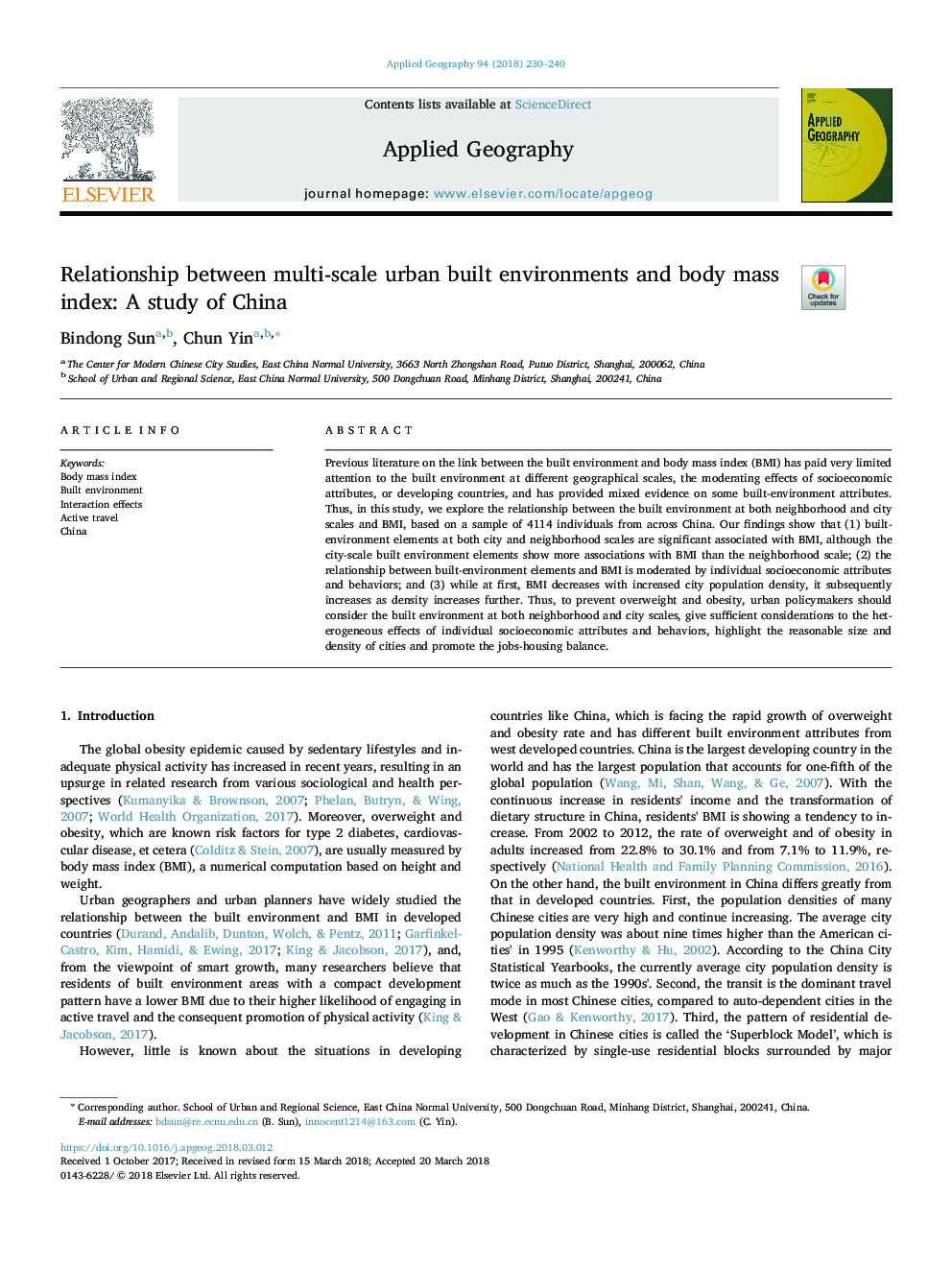| Article ID | Journal | Published Year | Pages | File Type |
|---|---|---|---|---|
| 6538290 | Applied Geography | 2018 | 11 Pages |
Abstract
Previous literature on the link between the built environment and body mass index (BMI) has paid very limited attention to the built environment at different geographical scales, the moderating effects of socioeconomic attributes, or developing countries, and has provided mixed evidence on some built-environment attributes. Thus, in this study, we explore the relationship between the built environment at both neighborhood and city scales and BMI, based on a sample of 4114 individuals from across China. Our findings show that (1) built-environment elements at both city and neighborhood scales are significant associated with BMI, although the city-scale built environment elements show more associations with BMI than the neighborhood scale; (2) the relationship between built-environment elements and BMI is moderated by individual socioeconomic attributes and behaviors; and (3) while at first, BMI decreases with increased city population density, it subsequently increases as density increases further. Thus, to prevent overweight and obesity, urban policymakers should consider the built environment at both neighborhood and city scales, give sufficient considerations to the heterogeneous effects of individual socioeconomic attributes and behaviors, highlight the reasonable size and density of cities and promote the jobs-housing balance.
Related Topics
Life Sciences
Agricultural and Biological Sciences
Forestry
Authors
Bindong Sun, Chun Yin,
